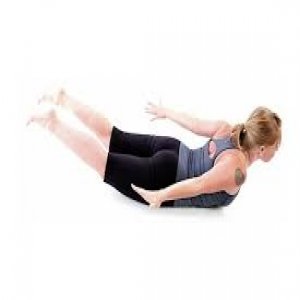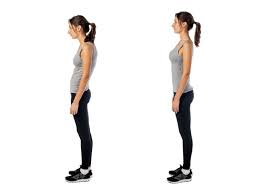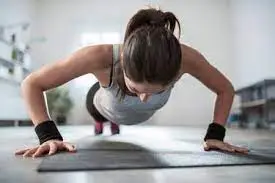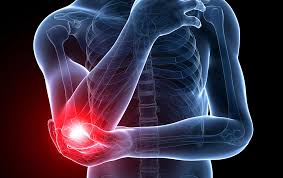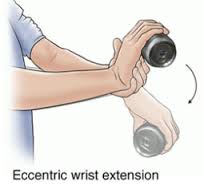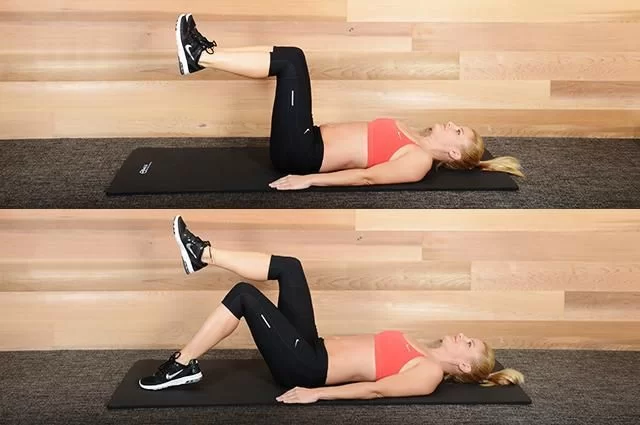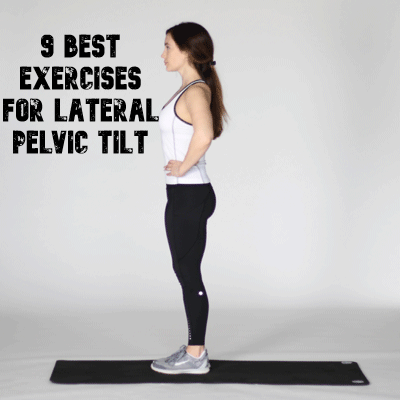Shalabhasana: Health Benefits, Types & Steps
What is Shalabhasana?
Locust Pose is a moderate back bend that tones and strengthens the entire back. “Salabhasana” (shah-lah-BAHS-uh-nuh) is the Sanskrit word for the position. So, essentially “Salabha,” in Sanskrit is defined as “locust,” and “Asana,” translates as “position.”
Locust Pose is a back bend that can help the beginner with deeper back bends and poses such as Wheel, Upward Dog, and Bow Pose. In a sequence, you might use Snake or Cobra to lead up to Locust Pose, and follow it with Bow or Crocodile. You can also use it after a Sun Salutation to aid energize yourself, stretch your spine, and open your chest, which can help you gain better posture.
What are the Health Benefits of Salabhasana?
The following are the Salabhasana benefits:
- This pose aids to invigorate the entire body by stimulating the internal organs and increasing blood circulation.
- It can aid in regulating the acid-base balance of the body.
- It can be done for the stimulation of abdominal organs.
- The arms, shoulders, chest, belly, legs, hips, thighs, buttocks and calf muscles are strengthened by this asana. This makes it one of the best yoga positions for your abs.
- This asana aids strengthen and toning the spine and the back as well as gives healthy posture.
- It can effectively activate metabolism as well as aid in losing weight.
- It offers relief for constipation, slipped disc, gastric troubles, and mild sciatica pain.
- The asana aids greatly in reducing tension and stress.
- It can refresh and energize fatigued people.
- It generates strength and heat within the body.
- Salabhasana aids to increase agility and flexibility.
- The asana aids to boost mental concentration.
- It aids in clearing the bowels when practiced regularly.
- It aids in resolving knee arthritis and hamstring injuries.
- Salabhasana activates the whole autonomic nervous system, particularly the parasympathetic outflow.
- People who love walking must perform this asana regularly as it can aid in walking long distances rather easily.
What are the Preparatory poses for Shalabhasana?
Here are the main Preparatory Poses that you need to perform before Salabhasana:
- Bhujangasana (Cobra Pose)
- Virabhadrasana I (Warrior I Pose)
- Urdhva Mukha Svanasana (Upward-Facing Dog Pose)
- Supta Virasana (Reclining Hero Pose)
- Virasana (Hero Pose)
- Gomukhasana (Cow Face Pose)
- Setu Bandha Sarvangasana (Bridge Pose)
How to do Shalabhasana?
Lie down in a prone position. Putting a blanket under your hips for padding makes this position a lot more comfortable, but you can skip it if you are performing the pose in a flow.
Bring your arms down by your sides with your palms facing the ground.
Stretch your legs extended behind you with the tops of your feet on the mat.
Draw your forehead or your chin to the mat in preparation. Rotate your shoulders back and down to open your chest.
Inhale and raise your head, chest, and arms off the ground.
Keep your arms extended behind you. Reach through all 10 fingers and turn your hands so that your thumbs are pointing downward. Keep sliding your scapulae down your back.
Engage your legs so that your knees raise off the floor. At the same time, try not to tighten your buttocks too much so that your tailbone has somewhere to go as you back bend.
Press the tops of your feet strongly into the ground.
Keep your gaze on the ground just in front of you so that your neck stays in a normal position, not cranking up.
Stay in this pose for three to five breaths.
On an exhale, release down to the ground. rotate your head to one side and rest on your cheek.
How to do Shalabhasana by watching a video?
What is the Follow-up poses for Shalabhasana?
These are the follow-up poses that you must do after performing Salabhasana.
- Ustrasana
- Dhanurasana
- Setu Bandha Sarvangasana
- Sarvangasana
- Bharadvaja’s Twist
- Balasana (Child’s Pose)
What are the Tips for performing Salabhasana?
- Since Salabhasana is a hard asana to master and can need a lot of effort on your part, as a beginner you should take things slowly and only gradually put in more effort.
- Do not raise your body too quickly or too high while doing Salabhasana as it can lead to cramping of the soles of the feet, injured hamstrings or ache in the lower back area.
- As a beginner, you can just start by raising your legs gently while keeping your upper body placed on the floor.
- If you want extra balance and support, you can use your hands to achieve that goal.
- Make sure that you perform this asana under the guidance of a professional yoga teacher.
- Salabhasana should be done during the early morning hours. However, if you are unable to perform so, you can do this asana during the evening as well.
- Make sure that you perform this asana on an empty stomach as it is one of the most potent abs strengthening yoga poses.
- Try raising one leg at a time, holding for 30 seconds and then switching legs.
What is the Variation for Shalabhasana?
Use these advanced variations once you have learned the locust pose:
- Interlace your hands behind your back before you raise into the pose. As you raise, rotate your shoulders back and extend your arms straight behind you, keeping your hands clasped. Start to raise your hands off your back up toward the roof.
- When you lift your upper body, simultaneously lift your legs off the ground, keeping them straight. Engage your whole leg, even reaching out through your toes. Keep your chest up.
- For an advanced challenge, straighten your arms in front of your body instead of behind. You will have to work extra hard to keep your chest raised.
- Begin to extend the amount of time that you hold the pose. Work up to 10 breaths, making sure that you are keeping the integrity of your alignment throughout.
- Try holding a strap between your hands and pulling on the strap to produce extra resistance for an extra challenge for the arms.
What are the Adaptations & Modifications To The Locust Pose
Locust Posture is a very good pose for strengthening your entire back. Keep in mind that you should never push your body into the posture to gain a deeper backbend. Adjust your position if you feel any discomfort or pinching feelings. There are many variants on this stance, so experiment with the following modifications to find one that works for you:
- Beginners can maintain the soles of their feet firmly planted on the floor.
- Maintain the forehead on the floor for beginners. Raise just your knees off the mat while placing your hands below your shoulders.
- Stretch your knuckles towards your heels for a wide shoulder stretch by interlacing the fingers behind your back.
- Place your arms out in front of you for a tougher upper-back workout.
- Extend your left arm forward for a wider stretch and strengthening of the back. Your left leg and arm should remain flat on the mat while you perform this. Your left leg should raise and your right arm should swing forward.
- Arms outstretched like wings are being raised in the air for a more challenging back workout and more tests of your flexibility.
What are the Types of Shalabhasana?
There are some types of Shalabhasana:
- Ardha Shalabhasana
- Purna Salabhasana (Full Locust Pose)
Ardha Shalabhasana
What is Ardha Shalabhasana?
Ardha Shalabhasana is a Sanskrit name given to this pose containing three root terms, ardha+ shalabha+ asana.
The term “Ardha” represents “half”.
“Shalabha” refers to “locust”.
“Asana” means “body posture”.
While holding this pose the body looks like that of the locust, similar to the basic position, shalabhasana from where it has been derived. The only difference here is, that it includes lifting only one leg at a time which explains the prefix “Ardha” and the name, Ardha shalabhasana.
It is also called by the names like Half-Locust Pose or Locust Pose Torso On Floor One-Leg Up.
Ardha Shalabhasana Benefits :
- Strengthens lower back – To hold Ardha shalabhasana the leg is raised using the back muscles. It stretches the back muscles and reduces any trapped tension. Thus, the lower back muscles are well used and strengthen the lower back.
- Tones the leg muscles – Ardha shalabhasana tones buttocks and thighs. It aids in losing any extra fat layer deposited around these regions.
- Improves shoulder and neck strength – This posture includes stretching the neck and shoulder muscles. It provides increased flexibility and strength to the practitioner.
- Enhances spine flexibility – The half locust pose stretches the whole back and activates the spinal muscles. As the legs are stretched back and the neck in the forward direction. This builds the spine flexible.
- Improves blood circulation – Ardha shalabasna activates the pelvic region which increases the flow of blood in this region. Due to increased blood circulation, it relaxes the pelvic floor muscles.
- Stimulates reproductive system – This asana allows the flow of blood toward the pelvis region and internal organs. It increases the efficiency of the reproductive system.
- Improves concentration – This pose activates the nervous system as awareness is drawn to coordinate the muscle motion with breathing patterns. This aids in enhancing the concentration power of the brain.
- Improves the Endocrine system – Ardha Shalabhasana also activates the adrenal and thyroid glands. It enhances the functioning of the endocrine system. The endocrine system regulates the glands of the body to secrete important hormones properly.
- Aids to better digestion – This pose massages the abdominal region and activates the internal organs. Hence, this pose is advantageous in facilitating the digestion process and keeps the practitioner away from digestive disorders.
Preparatory Pose for Ardha Shalabhasana:
- Bhujangasana (Cobra Pose)
Ardha Shalabhasana Steps:
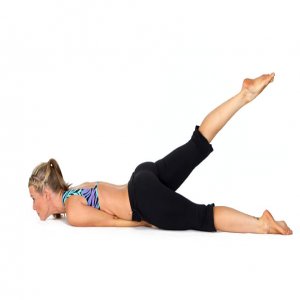
Begin with lying down in a prone position.
Place your hands under your thighs with palms facing either downward or hands clenched.
Ensure to keep the legs extended throughout the practice.
Elongate your neck muscles forward and place the chin on the ground. Your neck muscles and nerves must experience the stretch.
Collect the strength from the back muscles and inhale to raise the left leg as high as possible.
The right leg and the entire body remain on the ground.
Hold the last position as such breathing deeply for 10-15 seconds.
Let go of the pose by exhaling gradually to lower your left leg back to the floor.
Repeat the same sequences raising the right leg to attempt one round.
Similarly, do 3-5 rounds and then relax.
Follow-up poses for Ardha Shalabhasana:
- Shalabhasana (Locust Pose)
Beginners tips for Ardha Shalabhasana:
While doing the half-locust pose, the following tips will enhance your practice:
- Always raise your left leg first for Ardha shlabhasana, this will transfer pressure on the right side of the abdomen. It gives massaging effects on the ascending colon of the large intestine.
- This is followed by lifting the right leg to pressurize the descending colon.
- These two consecutive moves in this sequence aid in promoting intestinal peristalsis.
- Try to concentrate on your breaths and sync them with the motions.
- On a physical level, bring your awareness to the lower back, heart and abdomen.
Props and Modifications for Ardha Shalabhasana:
Use the following props to modify the Ardha shalabhasana’
- Blanket – Place a folded blanket under the pelvis before attempting the leg lifting to attain Ardha shalabhasana. It will assist to remove any strain on the lower back.
- Bolster – You can keep a bolster under the thighs instead of using the folded blanket to ease the pose.
Ardha Shalabhasana Variations :
By adding the following motions in the basic half locust pose, these variations can be done;
- Ardha shalabhasana II (asymmetrical)
- Ardha Shalabhasana II (symmetrical)
- Ardha Shalabhasana arms-forward
- Ardha Shalabhasana arms by the sides
Ardha shalabhasana II (asymmetrical)
In this variation, the arms are positioned asymmetrically, hence the name. For this, lying down on your belly extend your left arm over your head with your palm facing to the right. Place the right arm by the side with the palm facing towards the body.
Now, lift the right leg, left arm, head, and chest. Let the torso and left leg remain on the floor while holding the pose. Don’t forget to repeat it to the opposite side.
Ardha Shalabhasana II (symmetrical)
This variation can be performed by taking Advasana (opposite of Shavasana) as the base pose and lifting the alternative arm along with the raised leg. The raising of the leg and arm must be done simultaneously.
Here also, the first round is finished by repeating the above steps by switching the leg and arm. It is suggested to perform up to five rounds. This variation is suggested for beginners with a stiff back.
Ardha Shalabhasana arms-forward
For this alternative assume Advasana by keeping both arms extended over the head while lying down on your stomach. Now raise your right leg bent on the knee. Also lift both your arms, head and chest off the ground.
Ardha Shalabhasana arms by the sides
This variation is generally recommended by beginners. For this all the steps remain the same, only the arms are put by the sides of the body and not under the thighs. You can form a fist with your hands while raising the leg.
Precautions for Ardha Shalabhasana:
- While one leg is raised during the pose, the body should not experience any strain.
- Do not flex the knees while holding Ardha shalabhasana.
- Ensure the chin is in contact with the ground throughout the pose.
- Keep the torso to the ground and do not tilt or twist the pelvis.
Contraindications of Ardha Shalabhasana:
- This pose must be avoided by women during menstruation and pregnancy.
- Cardiac patients or people with high blood pressure must also avoid Ardha shalabhasana.
- Do not try this asana if you have a hernia.
- People with troubled back or slipped discs must not perform this pose.
- It is not suggested for people having lower abdomen issues, appendix, etc.
- Prevent this pose if you’ve had a recent injury in the legs or back.
Purna Shalabhasana
What is Purna Shalabhasana?
Purna Shalabhasana often known as Full Locust Pose in English is the advanced version of Shalabhasana (Locust Pose). The Sanskrit name Purna Shalabhasana arrives from three words, the first Purna, which refers to Full, the second Shalabh, which means Locust and the third Asana, which refers to Posture. This pose gives an intense stretch to the back and the abdomen. In this asana, the entire body seems to be in the shape of a Grasshopper. This asana is highly advantageous for the spine as it strengthens it and makes it very flexible.
Benefits of Purna Shalabhasana (Full Locust Pose):
The health benefits of Purna Shalabhasana which one may experience gradually with a regular practice are as follows :
- Increases the blood circulation in the body.
- Strengthens and stretches the back and pelvic organs.
- Boosts digestion and activates the appetite.
- Useful in tightening the muscles of the buttocks.
- Helpful in reducing obesity as it removes the extra fat from the body.
- Improves the posture and strengthens and stretches the muscles.
- Balances and Tones the functioning of all the abdominal organs.
- Most beneficial for the stomach, liver, and bowels.
How to do Purna Shalabhasana?
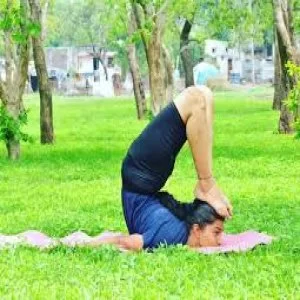
Inhale a deep breath and assume Shalabhasana’s last position, keeping the legs lifted as higher as possible in the air.
Tense and lay a strain on both arms’ muscles.
Keep both the shoulders and arms in firm touch with the floor to support the whole body.
Then raise both the legs vertically with a jerk. Balance on both the shoulders and arms.
After balancing the body in a stable posture, slowly flex both the knees, bringing both the toes downwards to touch the head and keep the breath inside the body.
Take normal breaths and stay in the same position for as long as you find it comfortable.
Retain the breath inside and return by raising both the feet from the head, finding the point to balance the whole body and then slowly and carefully lower the entire body.
Now, roll the head to either side or practice Advasana (Reverse Corpse Pose). Relax until the breathing and heartbeat come to normal.
Performing 1-2 rounds of this asana is generally sufficient enough. With practice, a person may increase the time duration. It is more beneficial when done before or after any forward bending asana.
Precautions for Purna Shalabhasana (Full Locust Pose):
The precautions for Purna Shalabhasana to be kept in mind for a safer performance are given below:
- Prevent straining the body beyond the limits as it may cause pain in the body.
- Prevent practising this asana if one’s body is very stiff or one is having weak back muscles, weak joints or a weak heart as it may rise the complications.
- People suffering from any of these conditions should prevent practising this asana: back pain, high blood pressure, coronary thrombosis, hyperthyroidism, joint pain, hernia, spinal disorders, ulcer, or cervical spondylitis.
What are the Common Mistakes you can avoid during Shalabhasana?
Crunching Your Neck
Crunching your neck is a concern, so be sure to keep the back of your neck elongated and your chin slightly tucked in. Don’t lift your shoulders towards your ears.
Bending Your Knees
Don’t flex your knees as this will put more pressure on your lower back.
What are the Precautions and contraindications related with Salabhasana?
These are the main precautions and contraindications that are associated with Salabhasana:
- This asana is contraindicated for migraines, headaches, neck injuries and spinal injuries.
- A pregnant or menstruating woman must never perform this asana.
- Do not perform Salabhasana if you have serious back injuries, knee, and hip injuries or Lumbar Spondylolisthesis.
- The asana should not be practised by those who have high blood pressure or glaucoma as it may lead to suffocation.
- Those with severe sciatica may suffer as this pose tightens the whole body from the hip to the feet.
- Those who have major problems with a prolapsed uterus should prevent it.
Bottom Line
Salabhasana is a type of backbend that uses the strength in your upper and middle backs to raise from starting position. The name arrives from Sanskrit, which means locusts! It’s not easy because it can be very challenging for some people but this asana increases flexibility while also improving coordination skills- plus you get strong muscles too.
FAQ
What is the benefit of locust asana?
Your back muscles that support your spine get stronger in locust position. It can aid you with posture and lower back pain relief. It can be done for the stimulation of abdominal organs.
This asana aids strengthen and toning the spine and the back as well as gives a healthy posture.
It can effectively activate metabolism as well as aid in losing weight.
It offers relief for constipation, slipped disc, gastric troubles, and mild sciatica pain.
The asana aids greatly in reducing tension and stress.
What are the health benefits of locust bean?
Finally, locust beans are a wonderful and wholesome cuisine that may be prepared in a variety of ways. They can lower the risk of cancer, manage diabetes, enhance heart health, increase energy levels, and support weight loss because they are a wonderful source of protein and vitamins.
What muscles are used in Salabhasana?
Salabhasana strengthens the muscles that arch the back, including the gluteus maximus, the hamstrings, the lower trapezius, the lower back’s quadratus lumborum, and the erector spinae that run the length of the spine.
Is salabhasana a posture asana?
Salabhasana is a backbend pose that strengthens the back and expands the front of the body. Its name is a combination of the Sanskrit words salabha, which means “locust” or “grasshopper,” and asana, which means “posture” or “seat.”

